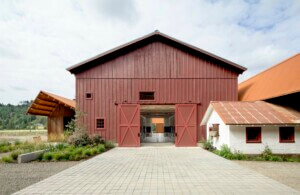When Thames Water extracted a 15 ton “fatberg” from the depths of London’s sewers last year, a neat portmanteau jumped from public utility jargon into the general lexicon.
The fatberg is made up of all the things that go down the drain but shouldn’t: baby wipes, sanitary pads, hair, and cooking oils. Though absolutely foul, the putrid blobs are massive reserves of untapped energy. (The video above shows the fatberg in its natural environment.)
Two Dutch designers, Mike Thomson and Arne Hendriks, have created a fatberg to experiment with energy extraction and adaptive reuse.
Thomson is co-founder the Amsterdam-based design and research group Thought Collider and Hendriks is the creator of the Incredible Shrinking Man. The duo describe Fatberg as a “critical design research project.” The project was exhibited at the 2015 Dutch Design Week in Eindhoven.
To build context for their design experiments, Thomson and Hendricks theorize on the nature of lipids. Fat is reviled in excess, but essential to survival. Fat is othered from the body through calorie counting and measurements like the Body Mass Index (BMI). Their analysis focuses on the spatiality and materiality of fat: its uneven distribution in the body (lipohypertrophy), its interface with surfaces (“Spiral Fatty”), its use in construction (reinforced fat), and fat’s presence in the ecosystem (sewer fatbergs, the duo claims, are glaciers in reverse)
Their designs exemplify the grotesque realism of reuse. Building on British World War II-era experiments that compressed wood pulp and ice to make bricks, the team created 30 percent beef fat and 70 percent pork fat admixture. To test the strength of various composites, Hendriks and Thomson added wood shavings, toilet paper, wet wipes, plastic straws, natural straw, and bubble wrap to the fat in different proportions to create a durable material.
Hendriks and Thomson report that “layering toilet paper, wet wipes, and hair significantly increased the tensile strength of the material (standard fat = 0.01Pa, “fatcrete” = >0.29Pa), highlighting the potential of fat composite materials for berg building.”
The video above shows the creation of a fatberg in the lab. As the excruciatingly slow pipetting illustrates, a proper fatberg can take years to grow.










